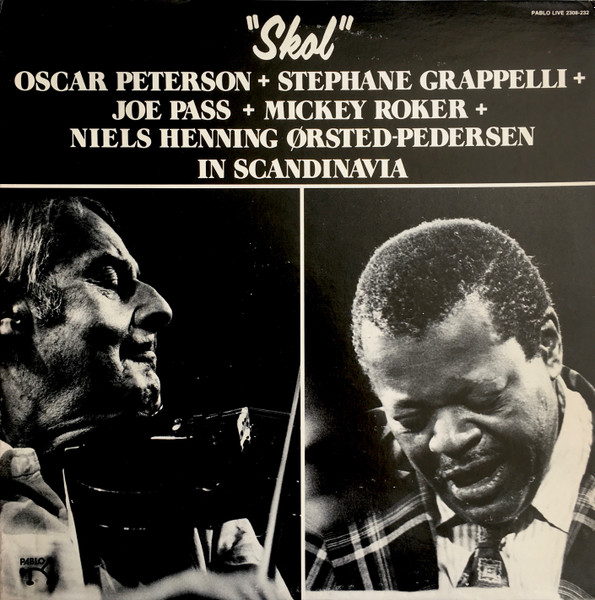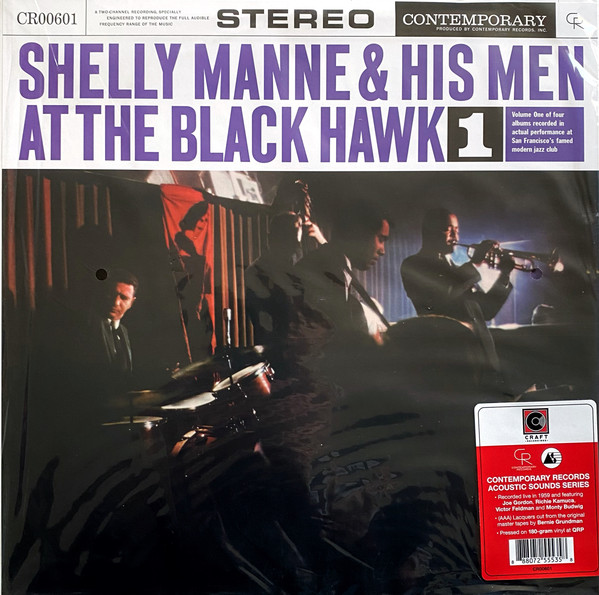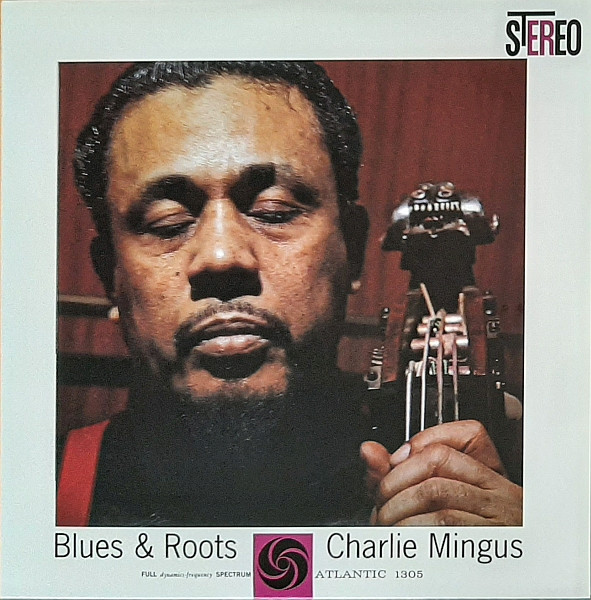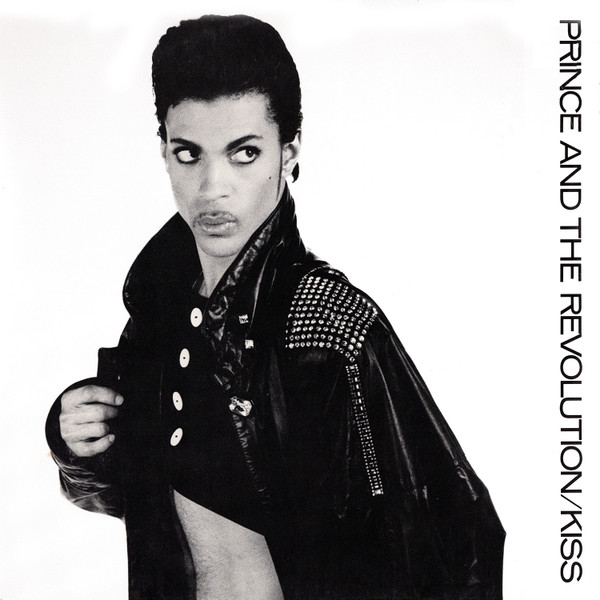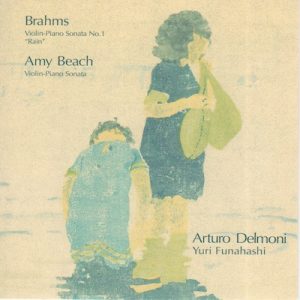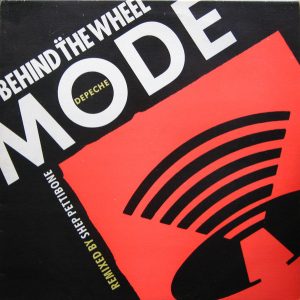This is an ongoing project by Claude Lemaire of Soundevaluations
211. Donald Byrd, At the Half Note Cafe (Volume 1). Blue Note – BLP 4060 (mono), BST 84060 (1961), Blue Note Tone Poet Series – B0033842-01 (2023), 33 1/3 rpm. Genre: jazz, hard bop, bebop.
Will that be black or with milk and sugar?
From the patron's opening chatter and hand claps, jazz radio personality and Blue Note's "head of publicity" Ruth Mason—completely to our left of stage—introduces the quintet to New York's famous Half Note Cafe jazz club. Just judging by the intro's natural sound quality, you know you are in for a real treat. Byrd is accompanied by Pepper Adams on baritone sax, Duke Pearson on piano, Laymon Jackson on bass, and Lex Humphries on drums. Pearson's "My Girl Shirl" starts us off on a fast-pace, strong note, with both blowers playing unison—Adams on the right and Byrd on the left. Naturally the latter takes the lead solo with an agility that many would envy, highlighting how Byrd was flying at the top of his game. Dizzy comes to our head, and indeed bebop phrasings nourish Byrd's fluid vocabulary as does Adams' deep and full tone lead solo. Pearson's piano takes third solo. He's on the left and you can hear some subtle bottle or glass clinking in the background reinforcing the recording's realism. Towards the coda, Byrd and Adams trade places in a call and response with the drums, ending with both back in unison reprising the opening main riff. "Soulful Kiddy" switches style to the typical early 1960's Blue Note hard bop cat-swinging "spy jazz" vibe. Side B slows things down to a beautiful ballad—"A Portrait of Jennie," the jazz standard popularized by Nat King Cole in 1948. Closing the album, "Cecile" picks up the pace a notch or two, leading with the piano, followed by the horns in unison seemingly blending in a nursery rhyme into the main riff, leading to the baritone's warm presence owning the moment with the rhythm section comping along. Rudy Van Gelder did an outstanding job capturing the combo in a very realistic small-venue live setting with the perfect ratio of intimacy, presence, and ambiance that would even make Goldilocks proud, clearly superior sounding to his regular RVG standards. I am lucky to have an original or second press (non-DG) NM mono pressing which I always found excellent, exceeding the average original Blue Note sound—which has its pros and cons—the ride cymbal particularly natural sounding. But this Tone Poet remastered and cut as always by Kevin Gray accompanied by Joe Harley is a cut above the rest. As is usually the case, the Tone Poets surpass the originals in better, warmer, and wider tonal balance. Such is the case here, with better bass, baritone, and exquisite trumpet; but perhaps because of Van Gelder getting it better at the tape source, Gray got it superior also to his high standards. As typical Tone Poet, the visual presentation is top notch with laminated gatefold cover showing inside the musicians as well as RVG and Alfred Lion. To conclude this ranks as one of their top-sounding remasterings; plus you get subdued Jazz at the Pawnshop ambiance with to my taste, superior music and performances. Demo-worthy!
212. Grachan Moncur III, Evolution. Blue Note – BST 84153 (1964), Blue Note Classic Vinyl Series – Ume 4535335 (Ger.) (2022), 33 1/3 rpm. Genre: avant-garde jazz, contemporary classical, third stream, modal, hard bop.
Trombonist Grachan Moncur III's debut album Evolution features an impressive lineup consisting of Lee Morgan on trumpet, Jackie McLean on alto, Bobby Hutcherson on vibes, Bob Cranshaw on bass, and seventeen-year-old Tony Williams on drums—who had just joined Miles Davis' Second Great Quintet. Four long pieces, all composed by Moncur III, gravitate towards the avant-garde jazz style, in the vein of Eric Dolphy's Out to Lunch! (Blue Note BST-84163) released five months later, which also starred Williams and Hutcherson in their ranks—see selection #192 HERE. An "Air Raid" starts side A. At first all is quiet on the Northeastern front with only a sustained grumbling from the vibes supported by the bass slowly alternating between the two same notes; sax enters, then trumpet chimes in unison, leading to the trombone's solo sliding at a snail's pace until the one minute mark where they switch gears to turbo tempo; Tony turning up the heat on the cymbals and skins before reverting to the turtle slo-mo pace. The sax takes up the torch doing his dissonant solo, repeating the pattern, perusing with the trumpet's frenetic soloing until the snare and vibes play a game of cat and mouse, after which the main motif makes a final comeback. The title-track offers a different vibe—no, not the instrument—but the mood. At twelve-minutes, it is the longest piece of the album and stays very slow the entire time with a dissonant eerie ambiance, more third stream contemporary than jazz per se, not unlike Stan Kenton's mid-1960s Neophonic Orchestra explorations. Judging by the interplay between the instruments and especially the snare drum and vibraphone, it is conceivable that it may have influenced Lalo Schifrin's work—not the theme but rather the recurring 'secret operation'—background tracks—on such TV series as Mission: Impossible and Mannix from the same era. Side B opens with my favorite piece from the LP, "The Coaster." Coasting energetically at a cool hard bop pace led by the trombone and vibes, the quintet does a volte-face when the trumpet and sax join in, creating a Spanish-like chord or Phrygian mode. It gets really interesting when the sax solo blasts off full speed ahead, the bass doing double time with Williams weathering the storm of snare and cymbals, skillfully counterpunching the trumpet, the group going back and forth between flamenco-flavored influences and straight hard bop. Here Morgan masterfully crushes it, so does Hutcherson, his mallets moving at dizzying speeds. The coda comes back with the minor-key motif, followed by an original loop-like fade-out. The final track "Monk in Wonderland" combines a strange ascending and descending Monk-ish music scale with all players in unison for the first measures, after which trumpet, sax, trombone, vibe, and bass go solo, before they end off repeating the main motif. This is another Blue Note where RVG surpassed his usual batting average, nearly equaling his work on Dolphy's Out to Lunch!. Kevin Gray remastered and cut it in 2022. The timbre and realism of the vibraphone and the soundstage's layered relief and depth are to die for. The dynamic snare drum is also a recurring highlight. Brass meet the usual high standard of Rudy—always his forte—and bass is better than typical, though a touch light weight more on side B than side A. Being part of their 'Classic Vinyl Series', it is pressed in Germany by Optimal Media GmbH. As such this release surpasses the average of this series and is among its best, but it falls just short of the usual higher-refined and priced Tone Poets from RTI, showing some faint grain in the treble affecting the brass. Given a choice, I would have easily payed the price difference for an RTI-pressed Tone Poet for that extra refinement, warmth, and the superior-looking glossed gatefold jacket for such a musically incredible album.
213. Metallica, The $5.98 E.P. – Garage Days Re-Revisited. Elektra – 60757-1 (Ger.) (1987), 33 1/3 rpm. Genre: thrash metal, speed metal, heavy metal.
What sets this Metallica release apart from their main catalogue is that it is an EP rather than a regular LP, plus there are no original compositions; all five tracks are covers of lesser-known bands that they liked or were influenced by. With the exception of Killing Joke who were more successful and more alternative-leaning, the four others—Diamond Head, Holocaust, Budgie, and Misfits—fitted more in the late-1970s and early-1980s heavy metal and hardcore punk scene. It came out in August 1987, when the band was at an important juncture in their career. Following the death of bassist Cliff Burton, as well as their masterful Master of Puppets in March 1986, and preceding the progressive landmark...And Justice for All in September 1988, Garage Days afforded the band a brief recess from their heavy schedule and what lay ahead as success grew, cementing their reputation for the decades which followed. They rehearsed in drummer Lars Ulrich's garage in EL Cerrito, before recording and mixing at A&M in Santa Monica, and Conway in Los Angeles, California. The performances and resulting sound are both exalting and raw, very much like a live band playing in your garage or basement. Tight, and dynamic with crunchy guitars, dry vocals, crisp, natural drums, and barely produced—almost "direct-to-disc" sounding, but fiercely energetic and exciting from start to finish. Engineered by Csaba "The Hut" Petocz, Greg Dennen, and Mamie Riley, and mastered by Ron Lewter, the sound is refreshingly honest, scarcely compressed, especially so for a metal release. This is Metallica as non-polished as you'll ever get to hear.
214. Prong, The Peel Sessions. Strange Fruit – SFPS078 (1990), 45 rpm. Genre: crossover thrash, speed metal.
Keeping in the vain of the previous selection, New York City's Prong participated in the famous "Peel Sessions" emanating from the vaults of BBC Radio 1. Named for DJ radio presenter John Peel, the show often featured emerging rock bands performing four songs live in the studio, and mixed the same day, giving them a raw, demo or garage-like sound quality and feeling. Based on the half-dozen vinyl releases of this series I have heard, all are dynamic, refreshing, exciting, and audiophile–in an authentic-sounding presentation. Prong is no exception in every manner. The four short songs stemming from their debut EP and album—Primitive Origins (Mr. Bear Records MRB 003) and Force Fed (In-Effect 88561-3004-1) respectively—are explosive! From the beginning, Prong were a cross-pollination of punk, thrash, angular, and abrasive metal, heading more towards a groove, alternative, and industrial metal, starting with 1990's Beg to Differ (Epic E 46011) and continuing on 1991's Prove You Wrong (Epic EPC 468945 1) featuring the single "Unconditional." On this EP, the trio consists of Tommy Victor on guitar and lead vocals, Mike Kirkland on bass and lead vocals, and Ted Parsons on drums and back vocals. Produced by Dale Griffin, engineer Mike Engles recorded them in January 1989 and the first transmission was in February. The thin but silent UK pressing was done by Adrenalin in Slough, Berkshire, England in 1990. The sound is direct, dynamic, punchy, and well balanced.
215. Virgil Fox, The Fox Touch • Volume One. Crystal Clear Records – CCS-7001 (Ger.) (1977), 33 1/3 rpm, (black vinyl version). Genre: classical, baroque, modern.
There are very few pipe organ recordings rising to the challenge of making it onto this SuperSonic List, simply because rare are those that are recorded, mastered, and cut well enough to impress in comparison with the real thing. The Mighty Beast, often regarded as the "King of Instruments," poses a colossal task to any engineer, by its sheer size, power, and otherworldly dynamic range. Finding the right equipment, mic positions, and recording levels are not for the faint of heart. Which explains why it is only the second pipe organ record yet featured here, the first being the Buzz Brass, Barney, Holst's Planets on Fidelio Music at #21 HERE. Being a direct-to-disc definitely raises the stakes a few notches regarding best cutting levels, headroom, and groove-pitch spacing, but it will help for a greater dynamic range and lower noise floor due to eliminating any tape hiss. Crystal Clear Records—like most direct-to-disc releases—were nearing their peak period in 1977, right before the first commercial digital recordings on vinyl. I have a few of their releases in 33 1/3 and 45 rpm, and most are sonically quite impressive. This one is no exception; plus music wise, renowned organist Virgil Fox–famous for his "Heavy Organ" concerts during the 1970s—gives a vigorous performance of three tremendous Toccatas, including probably the most famous Toccata and Fugue in D minor (BWV 565) by Bach. Also present and from Bach is the Toccata, Adagio and Fugue in C major (BWV 564), plus the Toccata from the Symphonie Concertante, Op.81 by Joseph Jongen composed in 1926. Fox plays a Fratelli-Ruffatti organ consisting of 116 ranks, 108 stops and 6791 pipes. Recorded at Garden Grove Community Church, in Garden Grove, CA. Pressed by Teldec-Press GmbH in West Germany. Engineer and co-founder of Everest Records, Bert Whyte, and mastering and cutting engineers Richard Simpson and Stan Ricker did a phenomenal job. Some of the most dynamic and deepest organ bass on record!
For more from Claude Lemaire go to his blog...
http://soundevaluations.blogspot.ca/















